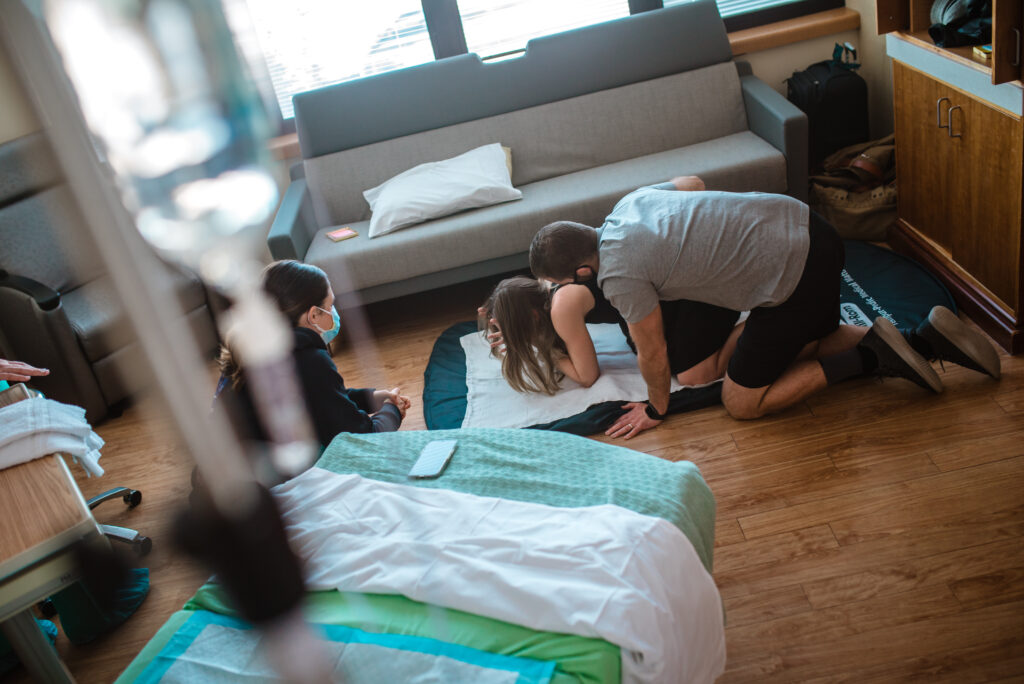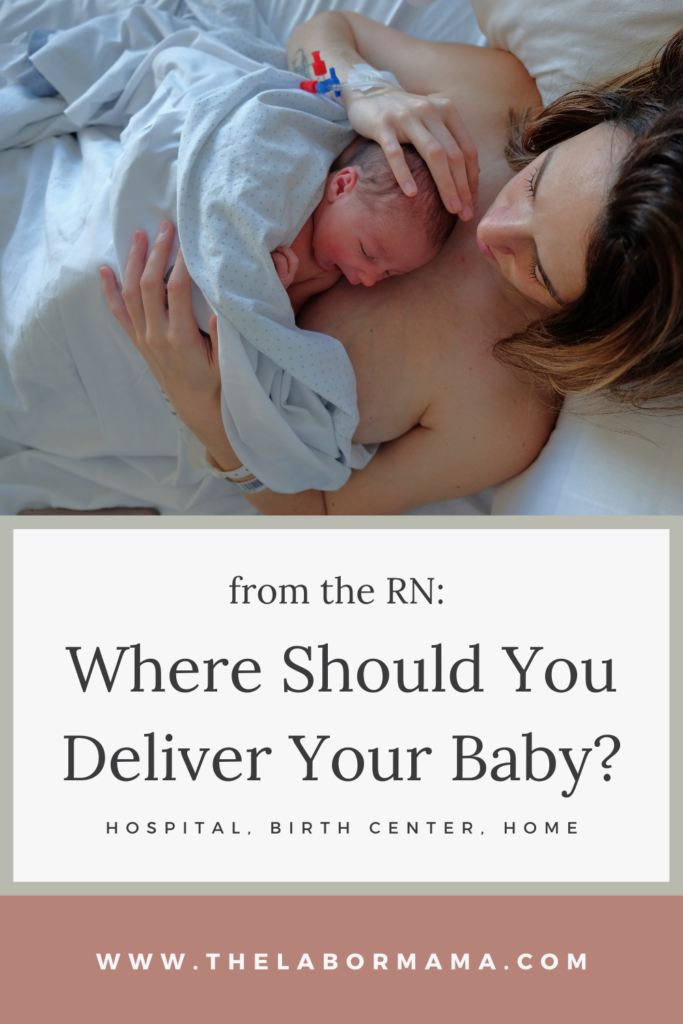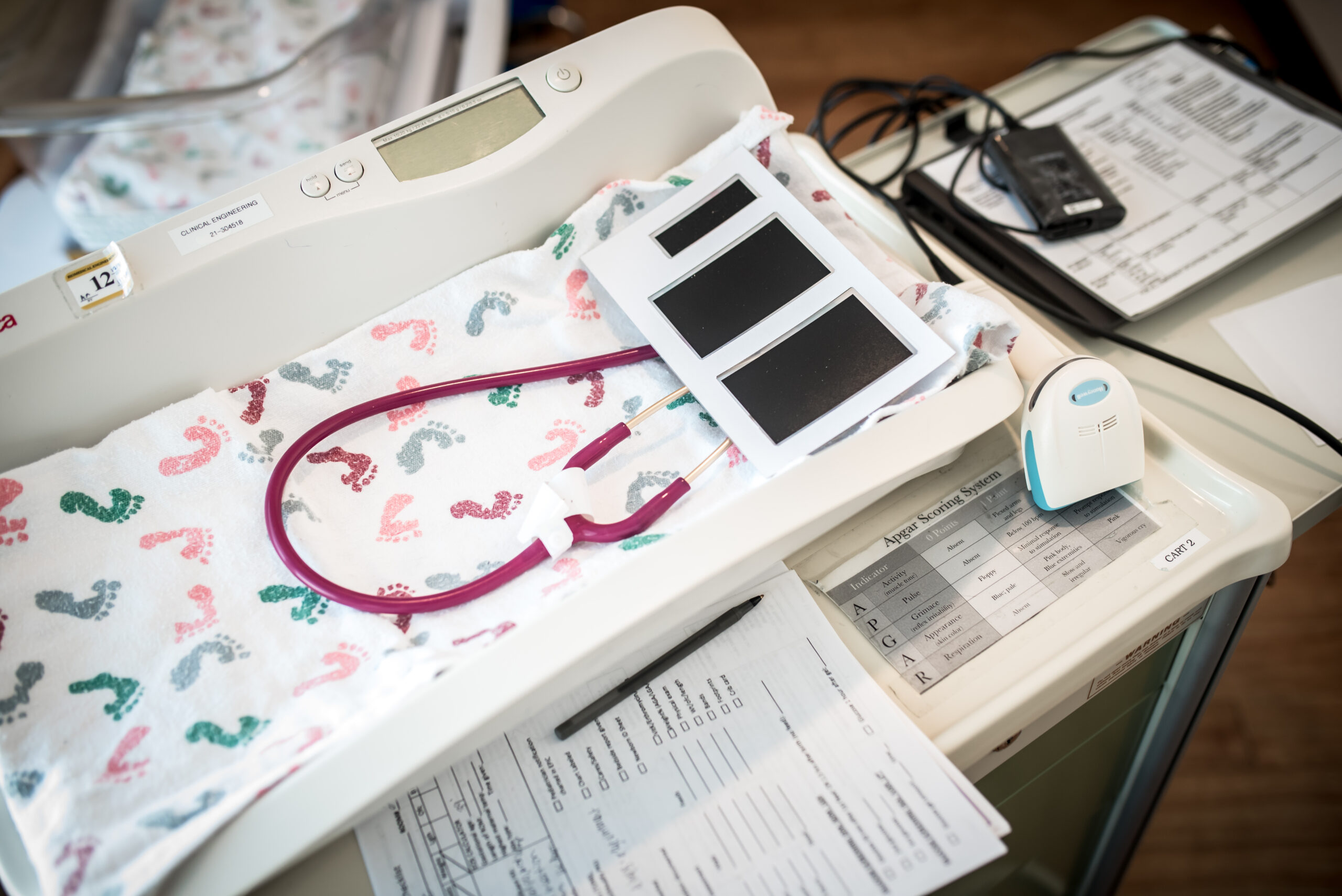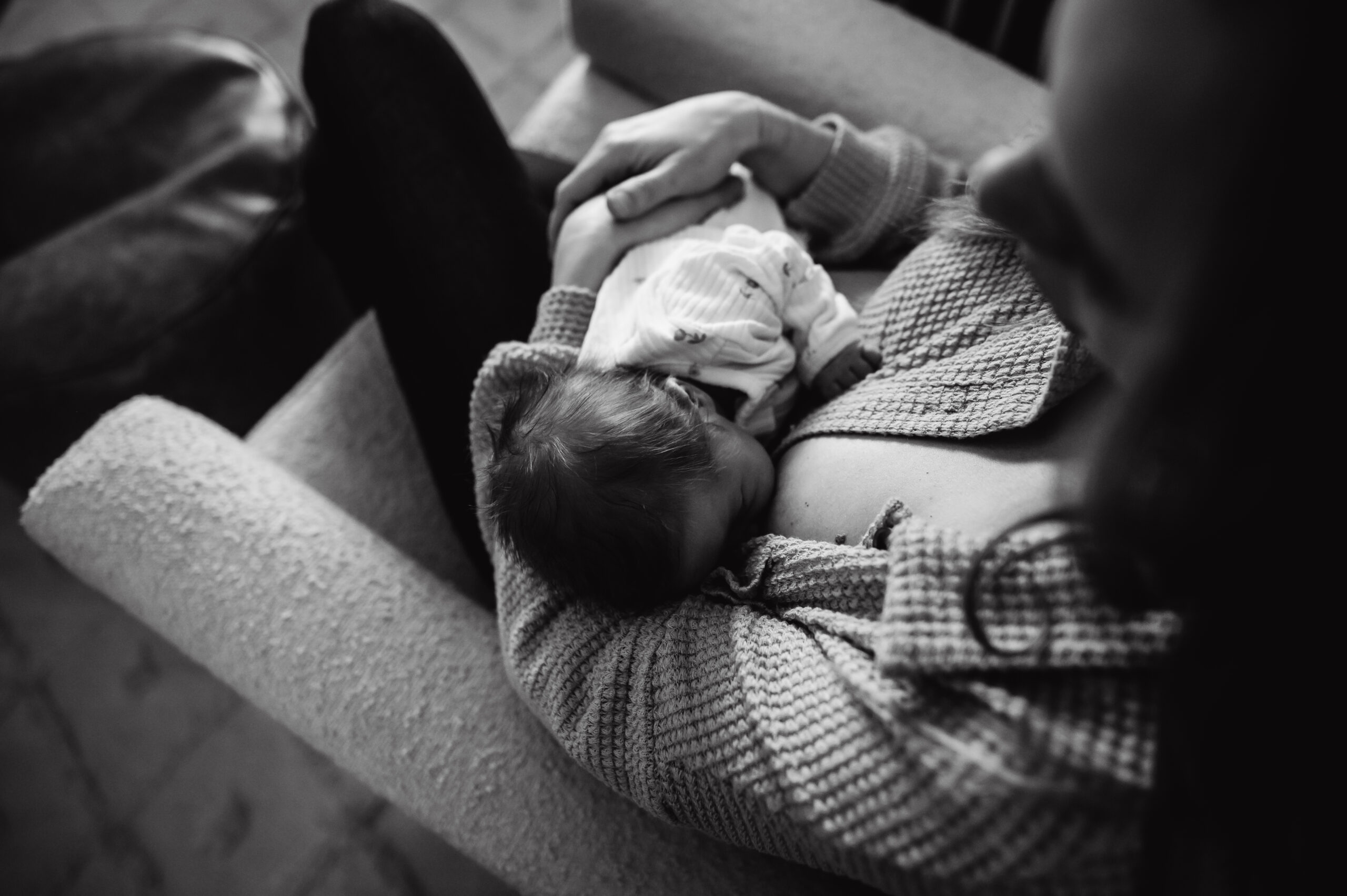Choosing where to have your baby is just as important as choosing a birth provider! I often tell friends to choose their location before they choose a provider. And I know – that sounds a little backwards. But if you are really wanting a home birth or a birth center birth, there’s a good chance that there are only certain providers (like a midwife) who can deliver you in those spaces. Knowing where you want to have your baby can actually help narrow down the list of providers to interview or consider.

Why where you deliver your baby matters
Did you know that when you feel unsafe or interfered upon too much, your catecholamine levels – basically meaning stress – can rise and your body can actually try and stop or slow down your labor? The things your environment offers you and the ways that it makes you feel can be a really important part of how safe, cared for, and comfortable you feel as you are laboring!
You want your labor to be as “easy” as possible, right? Then you need to spend some time thinking about where to have your baby. During childbirth, your location can actually make the process faster, easier, and more empowering for you.
Can you choose where you give birth?
Traditionally, there are three location options for your labor and delivery. You can deliver at a hospital, at a birth center, or at home. When you make this choice, you’ll really want to consider your personal story, your health history, and your hopes for your labor and birth. Depending on your pregnancy and its level of risk, each of these spaces can be a safe environment to have a baby.

Let’s go over each of the possible birth locations. I want to share what I believe are generally recognized pros and cons to each, while also acknowledging that each of us values different resources in different ways.
Hospital Birth
The vast majority of births in the US occur in hospitals. Typically, the percentage of hospital births hovers around 95%. In a hospital, providers are most commonly OB-GYNs, family practitioners, or certified nurse midwives.
Usually, the obstetric care of a hospital is laid out in one of two ways. A hospital can be a labor, delivery, recovery, and postpartum unit, which is also known as LDRP. A hospital can also have two separate units – one for labor and one for postpartum. On an LDRP unit, RNs are trained to care for you during labor, birth, and postpartum and you do not switch rooms after your delivery. I love this continuity of care and it’s where I’ve worked and had my 3 littles! However, it is more common to see separate labor/recovery and postpartum units. When you deliver at one of these hospitals, you will move rooms after birth and have new postpartum RNs.

Hospital pros may include:
- Most robust options for pain relief and control
- Easiest and quickest access to resources in case of an emergency
- 24-96 hours of postpartum care depending on mode of delivery
- Readily available NICU care
- Some patients feel safer
- Covered by insurance
Hospital cons may include:
- More medicalized approaches to labor and birth
- Can feel unfamiliar and unsafe
- Perceived loss of autonomy and decision making power
- Restrictions related to monitoring, eating, pushing
- Having to stay 24 hours postpartum
Birth Center Birth
Birth centers can be freestanding or hospital-affiliated. When birth centers are hospital-affiliated they are usually on hospital grounds or connected to the hospital, but they practice as per the American Association of Birth Centers (AABC). Freestanding birth centers are unaffiliated with a hospital system, but are usually state or agency licensed. There are rules about how far a freestanding birth center can be from a hospital, but the distance varies state to state.
“A home-like facility…guided by principles of prevention, sensitivity, safety, appropriate medical intervention, and cost effectiveness, [that] provides family-centered care for healthy women before, during, and after normal pregnancy, labor, and birth.” – AABC
A birth center can provide all low-risk prenatal, delivery, and postpartum care. They are fully equipped to handle the scope of low-risk vaginal birth and newborn care. When it comes to pain, birth centers have many pain management tools and tricks, but they do not offer epidural or spinal anesthesia. Also, birth centers frequently have a water birth option, can deal with a variety of emergent needs, and are usually in relationship with a practice or hospital for any needed transfers.
Birth center pros may include:
- Natural approach to labor induction or augmentation
- Attention to environment – beautiful rooms, lighting, views, privacy
- All kinds of non-medical pain management tools are available
- Less monitoring
- Commonly associated with extra amenities – things like acupuncturist, masseuse, or a photographer
- Shorter postpartum stay – usually 4-6 hours
- In depth postpartum follow up (sometimes at home)
Birth center cons may include:
- Can’t provide care for many higher-risk pregnancies
- May not be financially covered by insurance
- Full scope of medical pain management unavailable
- May have to be transferred to a hospital
- Can be geographically challenging to find one
If you are interested in birth centers that are near you and may be available to your family, you can use AABC’s search resource. As you search, pay attention to accreditation, which is given to freestanding birth centers by The Commission for the Accreditation of Birth Centers.
Home Birth
So what does home birth actually mean? Home births are intentionally planned to occur in a place of residence. The make up about 1% of overall births in the US. Most often these births are attended by midwives; a direct entry certified professional midwife is most common. It is not uncommon to have a doula involved as well. There’s a lot of controversy over who should be “allowed” or encouraged to consider birth at home and/or whether or not it is safe, but they are an option if you are low risk (in most places).
Right now, the American College of Obstetricians and Gynecologists (ACOG) states: “hospitals and accredited birth centers remain the safest places to give birth.” However, ACOG also supports you making a medically informed decision. To achieve best outcomes, they believe in licensed and credentialed provider support, a consulting relationship to higher acuity providers, and safe and timely access to a hospital. They also consider fetal malpresentation, multiples gestation, or prior cesarean delivery to be a reason one absolutely should not have a planned home birth.
Home birth pros may include:
- The comfort and familiarity of home
- No space or guest restrictions
- No commute to a hospital when labor starts
- Lower rates of interventions like episiotomies and instrumental deliveries and lower rates of maternal morbidities like postpartum hemorrhage (PPH) and lacerations. Source, Source, Source
Home birth cons may include:
- Unexpected transfer to a hospital
- Though often cheaper than hospital/birth center birth, patients usually pay all out of pocket
- Potential delay in access to more extensive emergency medical needs
- Some research reports an increased risk in neonatal deaths and seizure/neurological activity with home births (though still rare) Source
The takeaway on where you have your baby
It is impossible to say what is the “best” location to have your baby. There are just too many factors that play into the decision! Your personal hopes and desires also play a significant role in what does and does not feel right, safe, or welcoming. As with anything related to birth, know your options, know your own personal level of risk, and allow your partner to chime in as well. I do believe that there is a location intended for each of you, and sometimes you just need to do some work to figure that out!





